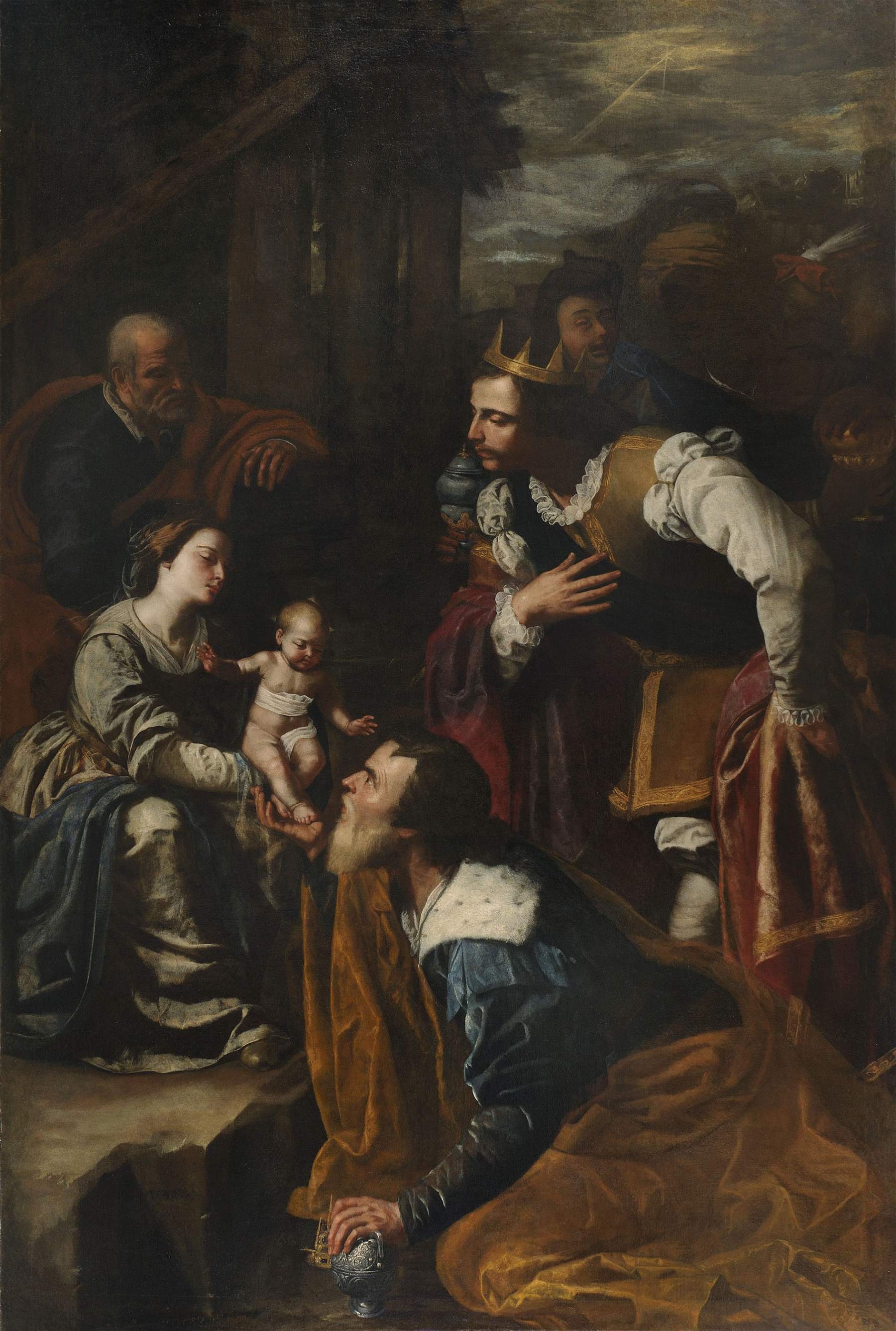The Diocesan Museum of Milan renews its traditional Christmas display of a painting from other museums again this year. This year’s protagonist will be Artemisia Gentileschi (Rome, 1593 - Naples, 1654), and the work on display will be theAdoration of the Magi preserved in the cathedral of Pozzuoli (Naples), exceptionally loaned by the local diocese. The work is part of a decorative cycle created for the Puteolian church between 1636 and 1637: from October 29, 2019 to January 26, 2020, however, it will be taken out of its context and exhibited in the Lombard capital.
The cycle was commissioned by the bishop of Pozzuoli, the Spaniard Martín de León y Cárdenas after 1631: that year Vesuvius erupted but spared Pozzuoli, and the cycle was a kind of thanksgiving to the deities. Artemisia Gentileschi produced three works for the series: in addition to theAdoration of the Magi, she painted Saints Proculus and Nicaea and Saint Gennaro in the amphitheater, all made between 1635 and 1637, the latter year in which she left for England to join her father Orazio who was working across the Channel. The other canvases in the cycle (eight in all) were made by Massimo Stanzione, Giovanni Lanfranco, Cesare Fracanzano, Agostino Beltramo, Francesco Fracanzano, and Paolo Domenico Finoglio.
Artemisia had recently arrived in Naples (she arrived in Campania in 1630), and the one in Pozzuoli was her first major public commission in the area. Here, Artemisia elaborated the Caravaggesque lesson in the light of her new contacts with Neapolitan artists: the essential chromatic range, resolved on the variations of brown, red, blue and yellow tones, which the artist had already been practicing for some time, is enriched thanks to these experiences with a scenographic rendering of the effects of light and shadow, and with a renewed attention to the truth of things, as seen, for example, in the silver container carried by the kneeling wizard king. Moreover, the figure of the Virgin is depicted with a certain solemnity, but at the same time with naturalness, as she gently presents the child to the veneration of the Magi, under the eyes of St. Joseph who, according to the iconographic tradition of the Gospel episode, remains defiladed in the background. The composition is dominated by the imposing figures of the Magi in the foreground, richly attired, and fashionably dressed in cloaks of precious fabrics. One of the most interesting motifs of the painting is precisely the mixture of the solemnity of the moment and episode with the intimacy that the arrangement of the figures and their gazes suggest to the observer.
The Pozzuoli cathedral suffered very heavy damage during the 1964 fire, which caused partial deterioration of some of the canvases in the cycle: in Artemisia’sAdoration of the Magi, unfortunately, the upper part of the painting was irreparably damaged, and in particular the face of the Moorish magician, which today appears as if absorbed in the brown preparation of the canvas.
The exhibition, part of the annual exhibition Il Capolavoro per Milano (Masterpiece for Milan), is organized in collaboration with the Diocese of Pozzuoli and under the patronage of the Archdiocese of Milan. A Silvana editorial catalog accompanies the exhibition.
Pictured: Artemisia Gentileschi, Adoration of the Magi (1636-1637; oil on canvas; Pozzuoli, Cathedral)
 |
| This year Artemisia Gentileschi is the star of the Christmas exhibition at the Diocesan Museum in Milan. |
Warning: the translation into English of the original Italian article was created using automatic tools. We undertake to review all articles, but we do not guarantee the total absence of inaccuracies in the translation due to the program. You can find the original by clicking on the ITA button. If you find any mistake,please contact us.